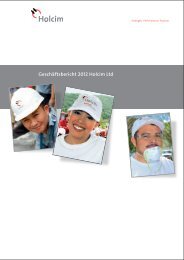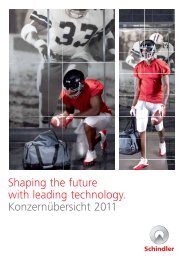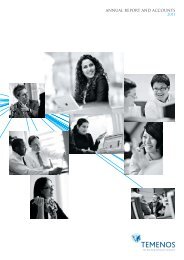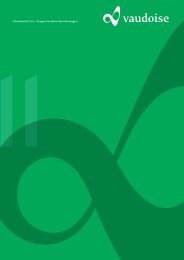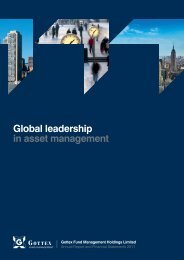download PDF - Newron
download PDF - Newron
download PDF - Newron
Create successful ePaper yourself
Turn your PDF publications into a flip-book with our unique Google optimized e-Paper software.
4 Critical accounting estimates, assumptions and<br />
judgements<br />
The preparation of this consolidated financial information<br />
requires management to apply accounting<br />
methods and policies that are based on difficult or subjective<br />
judgements, estimates based on past experience<br />
and assumptions determined to be reasonable and<br />
realistic based on the related circumstances. The<br />
application of these estimates and assumptions affects<br />
the reported amounts of assets and liabilities and the<br />
disclosure of contingent assets and liabilities at the balance<br />
sheet date and the reported amounts of income<br />
and expenses during the reporting period. Actual results<br />
may differ from these estimates given the uncertainty<br />
surrounding the assumptions and conditions upon<br />
which the estimates are based. Below are summarized<br />
the Group’s accounting estimates that require the<br />
most subjective judgement of management in making<br />
assumptions or estimates regarding the effects of<br />
matters that are inherently uncertain and for which<br />
changes in conditions may significantly affect the<br />
results reported in the financial statements.<br />
Estimates and judgements are continually evaluated<br />
and are based on historical experience and other<br />
factors, including expectations of future events that are<br />
believed to be reasonable under the circumstances.<br />
Share-based compensation expense and cash-settled<br />
share-based compensation<br />
The Group has granted share options to some of its<br />
employees, directors and consultants. The options<br />
granted have different vesting, maturity and exercise<br />
dates. Since there is no market for trading share options,<br />
management must use a fair-value method to value<br />
them. Fair-value methods require management to make<br />
several assumptions, the most significant of which are<br />
the selection of a fair-value model, share price volatility<br />
and the average life of an option. The fair-value of each<br />
of the share options has been determined separately<br />
by an external appraiser using an enhanced binomial<br />
model. Estimates have been based on Group history or<br />
market data where appropriate. There is no certainty<br />
that the results of a fair-value method would be the value<br />
at which the share options would be traded for cash.<br />
Should different assumptions be used, the expenditure<br />
recognized could be different. Additional information<br />
is reported at Note 2 “S Employee benefits”.<br />
Cost accruals<br />
The Group has numerous contracts with subcontractors<br />
who carry out research and development activities.<br />
The invoicing dates on these contracts do not<br />
coincide with the financial year-end. Thus, management<br />
has to exercise estimations as to the progress of work<br />
done under the contracts and apportion the cost to the<br />
different periods.<br />
Capitalization of development costs<br />
IAS 38 requires the capitalization of development costs<br />
upon the completion of certain requirements about<br />
commercial and technical feasibility of projects, the<br />
availability of adequate funding resources and the<br />
ability to measure costs reliably. All development costs<br />
incurred till December 31, 2011, have been treated as<br />
expenses as commercial and technical feasibility continues<br />
to be assessed. There are no intangible assets<br />
in relation to development expenditure.<br />
Deferred tax assets and liabilities<br />
Deferred tax assets are recognized to the extent that it is<br />
probable that future taxable profit will be available<br />
against which the temporary differences can be utilized.<br />
In determining the recognition of deferred tax assets<br />
and liabilities, the Group’s assessment of future tax able<br />
income, available taxable temporary differences, tax<br />
planning and applicable limitations on the use of taxloss<br />
carry-forwards are factors taken into account.<br />
The Group has incurred losses since inception and the<br />
availability of future taxable profits against which<br />
such an asset may be offset is uncertain. Accordingly,<br />
no deferred tax assets have been recognized. Should<br />
different events and assumptions be used, the deferred<br />
tax assets recognized could be different.<br />
Impairment of property, plant and equipment<br />
The Group has incurred losses since inception, and<br />
management considers this a sufficient indicator of the<br />
necessity of annual impairment tests. As of the year<br />
end, management assessed the fair values less costs to<br />
Notes to the Consolidated Financial Statements – <strong>Newron</strong> Annual Report 2011 5 3




